by Fred Bogert
The combined voices of a choir can really bring folks together, performers and audiences alike. And over the years the deep, shimmering tonalities of choral singing have been a mainstay of the arts for communities worldwide. Part of my recent adventures as composer and director has been to bring elements of other cultures into the repertoire of choirs I work with in good old Kentucky.
The other day I was finishing up a melody or a new anthem and picked up a guitar to test some different options for harmonizing the melody. I couldn’t find a flat pick, so in my impatience I grabbed a thumb pick and started “framming” away in a simple, strident back – and – forth to test some different chords. As I sang the melody against the chords and rhythm I was suddenly presented with the unmistakable lilt of reggae. This was not at all what I had intended, yet the melody of the chorus, when sung with a strong simple rhythm, gave just enough syncopation to balance the basic pulse of the accompaniment and create a fine energy around the simple and joyful message of the lyrics.
To arrange in this style for SATB, I chose a folk-like setting where the melody is mostly doubled by the sopranos and baritones, with repeated melodic phrases and block harmonies within. A benefit of this simple style is the ease with which the singers can learn the parts, which lets them quickly concentrate on the clear, precise accents and rhythms that bring out the best of the reggae feel. I wrote a piano score that stays simple and rhythmic under the voices. If a guitar player was to join in, it’s easy enough for them to play the open chords with strong quarter note ups and downs to be a strong metrical foundation for the voices to play off of. The broad half-note cadence at the end of the repeated chorus ties off the phrase and invites a small fill from anyone who might play along on cahon, tambourine or congas. I didn’t write and intro section for the accompaniment or the choir, preferring to have the chorus score be part of a “map”, something I’ll go over more in a bit.
Reggae is similar to other styles in that textures of the verses are different than those of the chorus. For this piece I have the verse melody ask for a more legato treatment, while the accompaniment has some responsive phrases included to answer the singers. The verses end with a longer cadence with the chords moving down, rather than up, and swelling to a final tenor-rich major seventh “Oh!” that sforzandos into the swell and moves nicely back into the next chorus.
Now for more about that “map”… I like the flexibility of a score presented in the efficient manner of this example. I call it a “map” because it presents sections that can be easily reorganized, offering several different “routes” for performance. I can ask that the instrument(s) play the first four bars of the chorus as an intro to the top of the score, or even the last four measures of the verse if we want something more exciting and different! From the end of the verse we can repeat directly to the chorus, or play the first four bars of the groove as an instrumental feature before starting the chorus. I’ve had singers sing the first line of the first verse in unison, a common device that lots of choirs include in their “maps”. We can choose lots of available options for performance, such as an acapella repeat of the last chorus, or a unison chorus to encourage folks to sing along. Any of these performance options can be done with a score layout like this without getting into reprints and editions. By not having an arrangement spelled out note-for-note, players and directors are encouraged to bring out the best of their musicians, and fit the arrangement to the moment. All this with no page turning! Here’s the shorthand for a simple map of this piece (V=verse, C=chorus). C, C, V1, C, C, V2, C, C, C (voices only). The choir can jot this down at the top of their score and we’re off! Those instrumental snippets for introduction and interlude can look like this – I-C mm1-4 (instruments play measures 1- of the chorus). Using this kind of shorthand, your choir can use one piece in a bunch of different ways, adapting to the ever-changing circumstances of the moment, and still having your choir sound fresh and focused.
Have fun with your reggae map!










